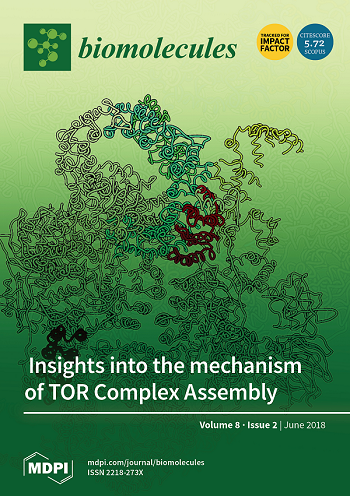A Putative Effector Pst-18220, from Puccinia striiformis f. sp. tritici, Participates in Rust Pathogenicity and Plant Defense Suppression
IF 4.8
2区 生物学
Q1 BIOCHEMISTRY & MOLECULAR BIOLOGY
引用次数: 0
Abstract
Stripe rust, caused by Puccinia striiformis f. sp. tritici (Pst), stands out as one of the most devastating epidemics impacting wheat production worldwide. Resistant wheat varieties had swiftly been overcome due to the emergence of new virulent Pst strains. Effectors secreted by Pst interfere with plant immunity, and verification of their biological function is extremely important for controlling wheat stripe rust. In this study, we identified an effector, Pst-18220, from Puccinia striiformis f. sp. tritici (Pst), which was induced during the early infection stage of Pst. Silencing the expression of Pst-18220 through virus-mediated host-induced gene silencing (HIGS) resulted in a decreased number of rust pustules. In Nicotiana benthamiana, it significantly suppressed cell death induced by Pseudomonas syringae pv. tomato (Pto) DC3000. In Arabidopsis, plants with stable overexpression of Pst-18220 showed increased susceptibility to Pto DC3000, accompanied by a decrease in the expression level of pattern-triggered immunity (PTI)/effector-triggered immunity (ETI)-related genes, namely, AtPCRK1, AtPCRK2, and AtBIK1. These results emphasize the significant role of the Pst candidate effector, Pst-18220, in rust pathogenicity and the suppression of plant defense mechanisms. This broadens our understanding of effectors without any known motif.三尖杉条斑锈菌中的一种假定效应子 Pst-18220 参与锈病致病性和植物防御抑制作用
由条锈病菌(Puccinia striiformis f. sp. tritici,Pst)引起的条锈病是影响全球小麦生产的最具破坏性的流行病之一。由于新的剧毒 Pst 菌株的出现,抗性小麦品种迅速被克服。Pst 分泌的效应物会干扰植物免疫,因此验证其生物功能对控制小麦条锈病极为重要。在这项研究中,我们从条纹赤霉病菌(Puccinia striiformis f. sp. tritici,Pst)中鉴定出了一种效应子 Pst-18220,它在 Pst 的早期感染阶段被诱导。通过病毒介导的宿主诱导基因沉默(HIGS)抑制 Pst-18220 的表达会导致锈病脓疱数量减少。在烟草中,它能显著抑制由西红柿假单胞菌(Pto)DC3000 诱导的细胞死亡。在拟南芥中,稳定过表达 Pst-18220 的植株对 Pto DC3000 的易感性增加,同时模式触发免疫(PTI)/效应触发免疫(ETI)相关基因(即 AtPCRK1、AtPCRK2 和 AtBIK1)的表达水平降低。这些结果强调了 Pst 候选效应子 Pst-18220 在锈病致病性和抑制植物防御机制中的重要作用。这拓宽了我们对无任何已知主题的效应子的了解。
本文章由计算机程序翻译,如有差异,请以英文原文为准。
求助全文
约1分钟内获得全文
求助全文
来源期刊

Biomolecules
Biochemistry, Genetics and Molecular Biology-Molecular Biology
CiteScore
9.40
自引率
3.60%
发文量
1640
审稿时长
18.28 days
期刊介绍:
Biomolecules (ISSN 2218-273X) is an international, peer-reviewed open access journal focusing on biogenic substances and their biological functions, structures, interactions with other molecules, and their microenvironment as well as biological systems. Biomolecules publishes reviews, regular research papers and short communications. Our aim is to encourage scientists to publish their experimental and theoretical results in as much detail as possible. There is no restriction on the length of the papers. The full experimental details must be provided so that the results can be reproduced.
文献相关原料
| 公司名称 | 产品信息 | 采购帮参考价格 |
|---|
 求助内容:
求助内容: 应助结果提醒方式:
应助结果提醒方式:


